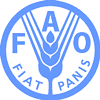 |
|||||||||
|
|||||||||||||||||||
|
|
Myanmar’s Food Bowl Devastated 09/05/08 The UN Food and Agriculture Organization (FAO) today called for US$10 million to assist poor farming and fishing communities in Myanmar devastated by cyclone Nargis.
The five worst-affected areas - Ayeyarwady, Yangon and Bago Divisions, and Mon and Kayin States - are considered Myanmar’s food bowl, producing much of the country’s staple food of rice and fish, and the overall food security situation in Myanmar is seriously threatened, FAO said. FAO’s call for funding is part of a UN flash appeal for the country that covers emergency relief and rehabilitation activities in the agricultural, fisheries and livestock sectors over the next weeks and months. While the second crop of the 2007 rice season was fully harvested before the cyclone hit and no major crop losses are expected in the region, rice already harvested for household consumption was most likely damaged by the storm surge, adding to the precarious food security situation of poor coastal families, FAO said. Inland and coastal fisheries, poultry and livestock were also either damaged or lost, according to FAO. An estimated 2 million households were affected, meaning that a significant number of farming and fishing families are in need of urgent assistance. “The hardest hit villages lost all their farming assets, as well as the food stored for the rest of the year,” said Anne M. Bauer, Director, FAO Emergency Operations and Rehabilitation Division. “Add to this the burden of rebuilding their destroyed houses and it is safe to say that these poor farmers will not have sufficient resources to purchase seed, fertilizers and other inputs, protect surviving livestock and replace lost ones, and pay for on-farm labour during critical phases of the farm cycle. Funds are urgently needed to help them resume food production, restore food availability and reduce the need for high cost and unsustainable relief.” Time running out According to FAO’s Regional Representative for Asia and the Pacific, He Changchui, time is running out to prepare for the main rice planting season starting in early June with the onset of the monsoon rains. “It is crucially important to mobilize the right type and volume of rice seeds, fertilizer and other production inputs quickly, in order to resume agricultural productivity in a timely manner,” he said. In Myanmar, people consume on average 20 kg of rice per month compared with 16 kg in Viet Nam, 10 kg in Thailand and 7 kg in Asia as a whole. As much fertile agricultural land was inundated with sea water, another FAO priority will be to analyse soil salinity and review damage to irrigation and capacity for draining agricultural lands to make them suitable again for farming. Relief and rehabilitation activities FAO’s proposed activities will help around 100 000 of the worst-affected farming and fishing households, particularly women and children, to rebuild their livelihoods through the provision of agricultural inputs such as rice and vegetable seed, fertilizer, fruit tree seedlings, farming tools, and technical know-how. The cyclone-hit areas are key livestock producing regions - comprising roughly 50 percent of national poultry production and 40 percent of pig production. To rehabilitate the damaged livestock sector, FAO plans to distribute draught cattle, goats, pigs and poultry to replace lost, sold or consumed livestock and supply veterinary medicines and vaccines to improve animal health and protect surviving livestock. FAO also plans to help the worst-affected fishing families resume fish production through the provision of fishing gear, nets, fish processing equipment, fish seed and fertilizers, and technical support. Needs assessment under way FAO is fielding its first damage and needs assessment mission this week. Two senior FAO staff, including a Regional Emergency and Rehabilitation Coordinator, are joining FAO’s resident team in Myanmar to lead the assessment mission. Cyclone Nargis has affected the same areas in Ayeyarwady Division that were hit by the 2004 tsunami, but this time around, the impact is believed to be far more severe. The area struck by the cyclone has some major fishing ports and landing sites. Early satellite pictures show significant damage to fishing vessels in harbours, and damage to infrastructure such as landing facilities and fish storage and preservation facilities is likely, FAO said. The fate of the vessels at sea when the cyclone hit is currently unknown. Myanmar does not have an early warning system for cyclones. Although fishermen are generally aware of weather conditions and do not go out to sea if storms are expected, fishers on small vessels may not have received warning in time. The coastline of Myanmar is over 3 000 km long and Ayeyarwady Division occupies the delta region of the Ayeyarwady River. The area has numerous rivers and channels and much of the transport in and around the area is by boat. As transport and communications are extremely difficult, FAO expects to have a preliminary assessment within ten days, and a fuller picture of the situation within one month. Short- and medium-term recovery plans will be prepared by FAO, and assistance will be provided to the Government to implement these emergency and rehabilitation plans. These plans will also take account of the need to address the food crisis in line with FAO’s Initiative on Soaring Food Prices (ISFP).
|
||||||||||||||||||

|
|
||||||||||||||||||
| home | agri-services | pedigree
pen | news | dairy | beef | machinery property | organisations | site map |
|||||||||||||||||||

